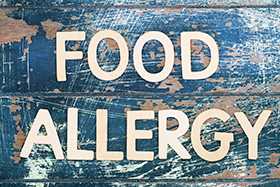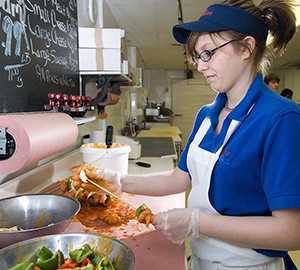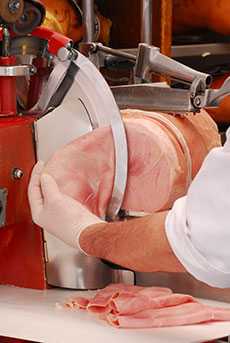Studies on Restaurant Food Handling and Food Safety Practices
On this Page
- Beef Grinding Logs
- Chicken Handling Practices
- Egg-Handling Practices
- Food Allergens Practices Study
- Food Cooling Practices
- Food Workers’ Food Preparation Practices Focus Group
- Food Workers’ Food Preparation Practices Population
- Ground Beef Handling Practices
- Hand-Hygiene
- Ill Food Worker
- Leafy Greens Handling Practices
- Microwave Cooking Practices
- Restaurant Manager & Worker Food Safety Certification
- Retail Deli Food Safety Practices
- Tomato-Handling Practices
This page lists completed EHS-Net food safety studies with a focus on restaurant food handling and food safety practices.
Read about how EHS-Net’s environmental public health practice work supports CDC’s Winnable Battle on Food Safety. [PDF - 479 KB]
Beef Grinding Logs Study
Objective: To describe recordkeeping practices of beef grinding activities in retail establishments.
Publication: Recordkeeping practices of beef grinding activities at retail establishments. [PDF - 283 KB] J Food Prot. 2011;74(6):1022-4.
Plain language summary: Beef grinding records kept by retail stores.
Chicken Handling Practices Study
Objective: To describe restaurant chicken preparation and cooking practices and kitchen managers’ food safety knowledge concerning chicken.
Publication: Frequency of inadequate chicken cross contamination prevention and cooking practices in restaurants. [PDF - 77 KB] J Food Prot. 2013;76(12):2141–5.
Plain language summary: How restaurants prepare and cook chicken.
Egg-Handling Practices Study
Objective: To identify the prevalence of high-risk egg-handling practices and establishment policies in restaurants that serve breakfast all day.
Publication: Prevalence of high-risk egg-preparation practices in restaurants that prepare breakfast egg entrees: An EHS-Net study. [PDF - 178 KB] J Food Prot. 2004;67:1444-50.
Plain language summary: How restaurants prepare eggs.
Food Allergens Practices Study

Objective: To describe knowledge and attitudes of restaurant managers, food workers, and servers about food allergies and to identify factors linked with their knowledge and attitudes.
Publication: Food allergy knowledge and attitudes of restaurant managers and staff: an EHS-Net study. [PDF - 176 KB] J Food Prot. 2016;79(9):1588-98.
Plain language summary: Food allergies: Knowledge and attitudes of restaurant managers and staff.
NEW!
Publication: Restaurant food allergy practices – six selected sites, United States, 2014. MMWR. 2017;66(15);404–7.
Plain language summary: How restaurants address food allergies.
Food Cooling Practices Study
Objective: To collect descriptive data on food cooling practices in restaurants and assess the effectiveness of these practices.
Publication: Quantitative analysis of restaurant data to determine best cooling practices. [PDF - 640 KB] J Food Prot. 2015;78(4):778-83.
Plain language summary: Best food cooling practices for restaurants.
Publication: Restaurant food cooling practices. [PDF - 435 KB] J Food Prot. 2012;75(12):2172-8.
Plain language summary: How restaurants cool food.

Food Workers’ Food Preparation Practices Focus Group Study
Objective: To evaluate behavioral factors, barriers, and motivations that influence safe food-handling practices in food-service establishments.
Publication: Factors impacting food workers’ and managers’ safe food preparation practices: a qualitative study. [PDF - 244 KB] Food Prot Trends. 2005;25:981-90.
Plain language summary: Factors affecting safe food preparation by food workers and managers.
Food Workers’ Food Preparation Practices Population Study
Objective: To determine self-reported prevalence of food service workers’ safe and unsafe food preparation practices at the population level.
Publication: Food service workers’ self-reported food preparation practices: an EHS-Net study. Int J Hyg Environ Health. 2005;208(1–2):27-35.
Plain language summary: Food safety practices of restaurant workers.
Ground Beef Handling Practices Study
Objective: To evaluate ground beef handling practices in restaurants.
Publication: Ground beef handling and cooking practices in restaurants in eight states. [PDF - 318 KB] J Food Prot. 2013;76(12):2132-40.
Plain language summaries:
- Restaurant ground beef handling and cooking;
- Restaurant traits linked with safer ground beef preparation and cooking practices.
Hand-Hygiene Study
Objective: To describe restaurant food workers' hand hygiene practices and identify factors associated with safe hand hygiene practices.
Publication: Factors related to food worker hand hygiene practices. [PDF - 489 KB] J Food Prot. 2007;70(3):661-6.
Plain language summary: Food worker handwashing and restaurant factors.
Publication: Food worker hand washing practices: an EHS-Net observation study. [PDF - 288 KB] J Food Prot. 2006;69(10):2417-23.
Plain language summary: Food worker handwashing and food preparation.

Ill Food Worker Study
Objective: To describe restaurant practices concerning ill workers and the frequency with which food workers work while ill with vomiting or diarrhea and to identify restaurant and worker characteristics linked with working with vomiting or diarrhea.
Publication: Managerial practices regarding workers working while ill. [PDF - 100 KB] J Food Prot. 2015;78(1):187-95.
Plain language summary: Food manager practices about workers working when they are sick.
Publication: Factors associated with food workers working while experiencing vomiting or diarrhea. [PDF - 190 KB] J Food Prot. 2011;74(2):215-20.
Plain language summary: Food workers working when they are sick.
Publication: Food worker experiences with and beliefs about working while ill. [PDF - 157 KB] J Food Prot. 2013;76(12):2146-54.
Plain language summaries:
Leafy Greens Handling Practices Study
Objective: To describe restaurant leafy greens preparation practices.
Publication: Handling practices of fresh leafy greens in restaurants: receiving and training. [PDF - 165 KB] J Food Prot. 2013;76(12):2126-31.
Plain language summary: How restaurants receive leafy vegetables.
Microwave Cooking Practices Study
Objective: To describe food service establishments’ microwave cooking practices.
Publication: Microwave cooking practices in Minnesota food service establishments. J Food Prot. 2016;79(3):507-11.
Restaurant Manager and Worker Food Safety Certification Study
Objective: To examine the relationships among kitchen manager and worker food safety certification, food safety knowledge, restaurant and manager characteristics, and foodborne illness risk factors observed in restaurants.
Publication: Restaurant manager and worker food safety certification and knowledge. [PDF - 485 KB] Foodborne Pathog Dis. 2014;11(11):835-43.
Plain language summary: Food safety certification and knowledge.
Retail Deli Food Safety Practices Study

Objective: To describe
- How often deli slicers are fully cleaned as often as FDA recommends (every 4 hours) and
- Deli, manager, and worker traits related to how often slicers are cleaned.
Publication: Retail deli slicer cleaning frequency — six selected sites, United States, 2012. MMWR. 2016;65(12):306-10.
Plain language summary: How often retail delis clean their slicers.
Tomato-Handling Practices Study
Objective: To identify the types of tomatoes used in restaurants and describe tomato-handling practices.
Publication: Tomato handling practices in restaurants. [PDF - 109 KB] J Food Prot. 2009;72(8):1692-8.
Plain language summary: How restaurants handle tomatoes.
- Page last reviewed: September 16, 2016
- Page last updated: April 28, 2017
- Content source:


 ShareCompartir
ShareCompartir